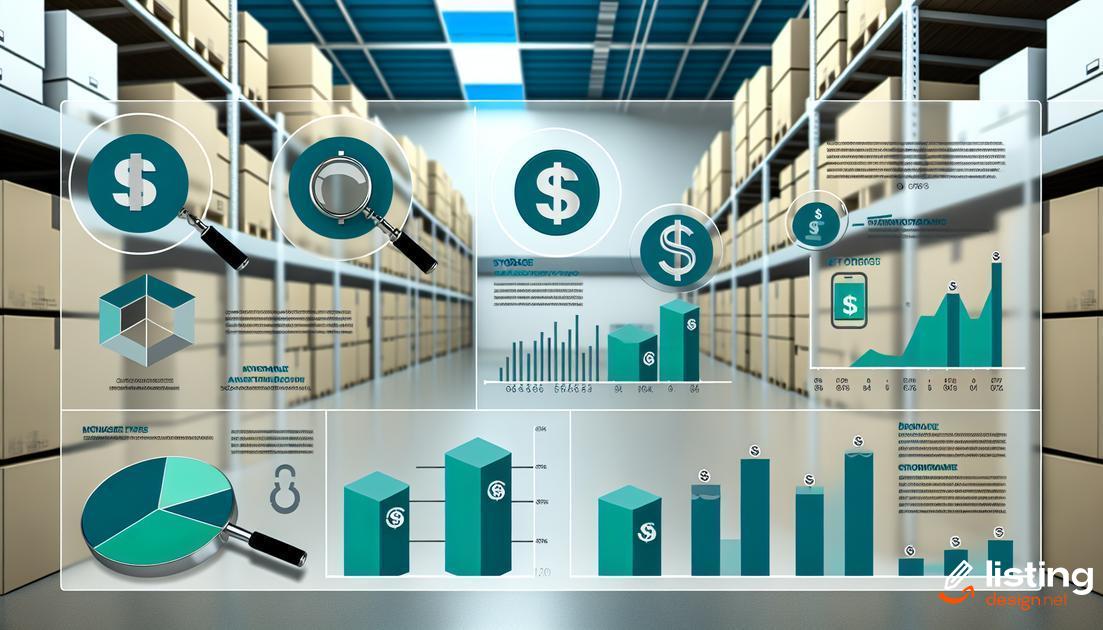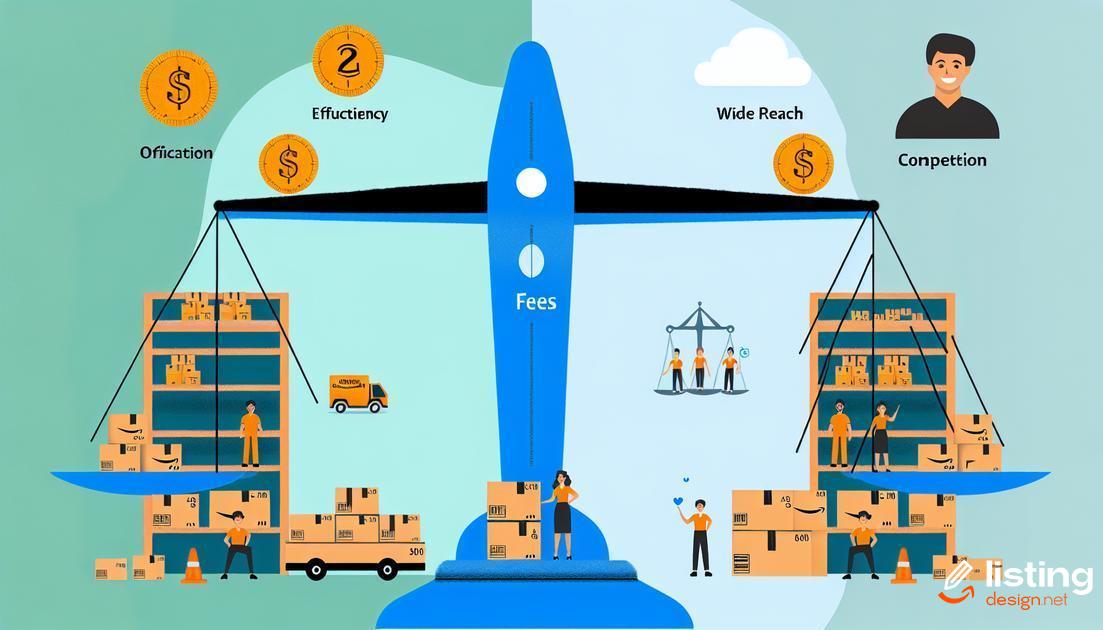Understanding Amazon FBA costs is essential for any seller aiming to maximize profits while effectively managing their business. In this blog post, we will break down what Amazon FBA costs are, covering key areas like storage fees, fulfillment charges, and additional service expenses. We will also explore strategies to minimize these costs and illustrate these principles with real-life examples. Whether you’re just starting out or looking to optimize your existing setup, this guide will provide actionable insights to help you navigate the complexities of Amazon FBA costs successfully.
Table of Contents
What Are Amazon FBA Costs?
Amazon FBA costs encompass various fees that sellers must understand to manage their business effectively. One of the primary components is the fulfillment fee, which is charged per unit and includes picking, packing, and shipping items. The amount depends on the product’s size and weight.
Another significant cost is the monthly storage fee. This cost is calculated based on the space your inventory occupies in Amazon’s warehouses. It’s important to note that fees vary according to the time of year, with higher rates during peak shopping seasons.
Additionally, there are fees for long-term storage. If inventory remains unsold for over a year, these charges aim to encourage the turnover of stock. Sellers need to monitor their inventory closely to avoid these extra costs.
Moreover, Amazon offers optional services that come with their own fees, such as labeling, packaging, and returns processing. These services can be beneficial but require careful consideration of their impact on profitability.
Understanding these costs is crucial for any Amazon FBA seller looking to maximize profits and optimize their e-commerce strategy.
Storage Fees Explained

In the complex world of Amazon FBA, storage fees constitute a significant portion of your expenses, making it crucial to understand what these fees entail and how they can impact your profit margins. Amazon storage fees are charged based on the volume your products occupy in Amazon’s fulfillment centers.
There are two main types of storage fees: monthly inventory storage fees and long-term storage fees. Monthly storage fees are computed based on the daily average volume, measured in cubic feet, of the space your inventory consumes, and they’re charged on a monthly basis. For standard-size items, the fee per cubic foot increases from January through September compared to October through December, owing to the holiday season.
During the holiday season, these fees can be considerably higher due to increased demand for storage space. This necessitates that sellers carefully plan their inventory levels in advance to minimize costs.
On the other hand, long-term storage fees are applied to items that have been in fulfillment centers for over 365 days. These items incur an additional charge per cubic foot or per unit, whichever is greater. This fee aims to encourage sellers to manage their inventory efficiently and avoid keeping stagnant stock in their fulfillment centers.
Understanding these fees is vital for optimizing your storage strategy. For example, regularly monitoring your inventory age and employing strategies like removing or liquidating slow-moving items can help you minimize long-term storage fees. Moreover, leveraging Amazon’s reports can provide valuable insights to efficiently manage your inventory levels.
Fulfillment Fees Breakdown
Fulfillment Fees Breakdown
Amazon FBA fulfillment fees are charges that sellers pay for Amazon to pick, pack, and ship their products. These fees vary depending on the size and weight of your items.
Standard-size items are those that weigh less than 20 pounds and have dimensions up to 18 x 14 x 8 inches. The fulfillment fees for these items typically range from $2.50 to $5.00 per unit.
Oversize items are larger and heavier, with fees starting from $8.26 and increasing based on the product’s weight and dimensions. These might include fees for items over 90 pounds or those with special handling requirements.
Amazon also charges different fees for items that are smaller and lighter, often referred to as Small and Light Program fees. These fees are usually lower, providing a more cost-effective option for lightweight products.
Moreover, seasonal factors and promotional periods can impact these fees, often leading to increased costs during high-demand seasons like holidays. Sellers need to strategize accordingly to manage these fluctuations and maintain profitability.
Understanding and managing fulfillment fees is crucial for maximizing your profits and ensuring that your pricing strategy accounts for all associated costs.
Additional Service Fees

When using Amazon FBA, it’s crucial to understand additional service fees that might apply. These fees can significantly impact your overall costs if not monitored closely. Here are a few key areas to watch:
Labeling and Preparation Fees
Amazon requires products to be labeled correctly. If you don’t label them yourself, Amazon will charge a fee per item. Similarly, products needing specific preparation like bubble wrap or poly-bagging will incur extra charges.
Oversize Handling
Oversize items incur higher fees due to their larger dimensions and weight. Ensure you’re aware of the cost implications if your products fall into this category.
Removal and Disposal Fees
Unwanted inventory can be returned or disposed of at a cost. The removal fee is typically charged per unit, while the disposal fee applies to items Amazon handles on your behalf.
Repackaging Fees
Returns might need repackaging before they can be resold. Amazon charges a fee for this service. Staying aware of these charges can help in strategizing product return policies.
By closely monitoring these additional service fees, sellers can better manage their profit margins and avoid unexpected costs.
Long-Term Storage Costs
Long-term storage costs can significantly impact your profit margins if not managed carefully. Amazon FBA charges higher rates for items stored in their warehouses for over 365 days. These fees are designed to encourage faster turnover of inventory, preventing stock from becoming stagnant.
From January 2022, long-term storage fees are calculated at a rate of $6.90 per cubic foot or $0.15 per unit, whichever is greater. This cost can add up quickly if you have large or slow-moving products in your inventory.
It’s crucial to monitor your inventory regularly and implement strategies to avoid these fees. Consider using Amazon’s notification system that alerts you when inventory is approaching the long-term storage threshold. Additionally, running promotions or discounts could help move older stock faster.
For those dealing with seasonal products, proper forecasting and inventory planning can prevent excess stock buildup. You might also explore liquidating older inventory through Amazon’s liquidation services or other online marketplaces.
Cost-Saving Strategies

Implementing cost-saving strategies is crucial for maintaining profitability when using Amazon FBA. To start, you need to optimize your inventory management. Overstocking can lead to high storage fees, especially with Amazon’s long-term storage costs. Use forecasting tools to predict demand accurately and adjust stock levels accordingly.
Bundle products where possible to increase the perceived value and reduce fulfillment fees. Offering bundles also helps in moving slow-selling items faster. You should also continually analyze your sales data to identify trends and adjust pricing or promotions to maximize sales while minimizing costs.
Take advantage of Amazon’s small and light program if applicable. This can significantly reduce fulfillment fees for small, lightweight items. Additionally, consider using lower-cost packaging that still ensures product safety.
Use automated repricing tools to stay competitive without drastically dropping prices. These tools help you maintain the best price points without constant manual adjustments.
Lastly, evaluate third-party service providers for prep, labeling, or other services that Amazon charges a premium for. Sometimes third-party providers can offer the same services at a reduced rate, helping you save costs without compromising service quality.
Real-Life Examples
Let’s examine some real-life examples to understand how Amazon FBA costs can impact your bottom line. Consider a small business selling fitness equipment. They opted for Amazon FBA to streamline their shipping process. Initially, their monthly expenses included storage fees of $200 and fulfillment fees averaging $3.50 per item. With an inventory of 100 units stored, storage fees added up quickly.
Another example involves a brand selling kitchen gadgets. During peak season, their storage fees jumped due to increased inventory levels. They had 500 units stored for over 6 months, thereby incurring long-term storage costs. Despite high sales, high storage costs cut into their profit margins.
Lastly, consider a tech accessories company. They used Amazon FBA’s additional services, including labeling and prepping. These additional service fees added an extra $0.50 per unit.
By analyzing these real-life scenarios, it’s evident that cost-saving strategies such as optimizing inventory levels and choosing the right fulfillment methods are crucial for maximizing profits.
Conclusion: Is Amazon FBA Worth It?

In assessing whether Amazon FBA is worth your investment, it’s essential to fully understand all the associated costs. Amazon FBA involves various fees such as fulfillment, storage, and additional service charges. For example, storage fees are charged based on the volume of your inventory and the time it stays in Amazon’s warehouse. During peak seasons, such as the holidays, these fees can increase significantly.
Additionally, fulfillment fees are calculated per unit and include picking, packing, and shipping costs. These fees vary according to the product size and weight. You should also consider additional service fees which could range from labeling and prep services to removal fees for unsellable items. Moreover, if your inventory stays in the warehouse for over 365 days, you will incur long-term storage costs.
There are several cost-saving strategies you can implement. For example, optimizing your inventory levels to avoid long-term storage fees can be beneficial. Consider using Amazon’s promotional resources to boost sales and clear out old stock. Learning from real-life examples and case studies can provide valuable insights into cost management and profitability.


